Diversification
| | This section is empty. You can help by adding to it. (November 2023) |
Murray Corporation of America run from 1600 Clay Street, Detroit Michigan was, from 1925 until 1939, a major supplier of complete automobile bodies to the Ford Motor Company. Non-automotive stamped steel products were added during the Great Depression of the 1930s. Production switched to wings for wartime aircraft and other aircraft components. Postwar they moved further into stainless steel products including cabinets and kitchen sinks. Washing machines, plumbing and bathroom fixtures, cutting tools and truck engine parts followed. Their last automotive products plant was sold in 1955.
By the 1960s a Fortune 500 company Murray later passed through the ownership of Dyson Kissner-Moran to Household International which is now a subsidiary of HSBC Holdings plc.
J W Murray Mfg Co had been founded in 1913 by John William Murray and his son to make stamped sheet metal part for automobiles. Their premises were in Detroit and located near what is now the Cadillac Hamtramck assembly plant. J W Murray established a second plant at Ecorse, Michigan. [1]
Murray Body Corporation was created in 1924 by merging C R Wilson Body Co of Milwaukee Junction Detroit with three Hamtramck businesses, Murray Manufacturing, Towson and Widman. Both Wilson and Murray were long standing suppliers to Ford. Combined the businesses could build 60,000 to 70,000 bodies a year. Towson Body Co and J C Widman & Co. (Towson include the Anderson Electric Car Co) were Murray's neighbours in Hamtramck. [1]
On the merger Murray Body Corporation became, after Fisher and Briggs, the third largest body company in the United States. [2]
A short sharp recession forced a financial reorganisation and as of January 1927 the business was moved into the ownership of Murray Corporation of America. [1]
| | This section is empty. You can help by adding to it. (November 2023) |
| | This section is empty. You can help by adding to it. (November 2023) |
Clarence W. Avery, recruited from Ford in 1927 and driving force of Murray for 20 years, is credited with introducing his industry to time-study and the moving assembly line. Avery was also well known for dealing effectively with autoworkers grievances working in with UAW. [1]
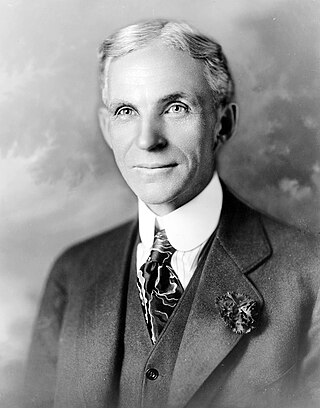
Henry Ford was an American industrialist and business magnate. As the founder of the Ford Motor Company he is credited as a pioneer in making automobiles affordable for middle-class Americans through the system that came to be known as Fordism. In 1911 he was awarded a patent for the transmission mechanism that would be used in the Model T and other automobiles.

Hupmobile was an automobile built from 1909 through 1939 by the Hupp Motor Car Company of Detroit. The prototype was developed in 1908.

Studebaker was an American wagon and automobile manufacturer based in South Bend, Indiana, with a building at 1600 Broadway, Times Square, Midtown Manhattan, New York City. Founded in 1852 and incorporated in 1868 as the Studebaker Brothers Manufacturing Company, the firm was originally a coachbuilder, manufacturing wagons, buggies, carriages and harnesses.
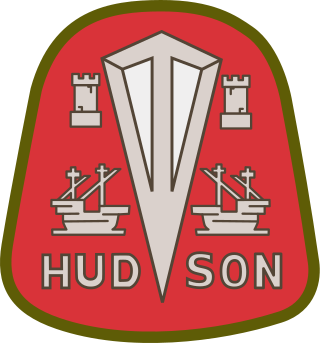
The Hudson Motor Car Company made Hudson and other branded automobiles in Detroit, Michigan, U.S., from 1909 until 1954. In 1954, Hudson merged with Nash-Kelvinator to form American Motors Corporation (AMC). The Hudson name was continued through the 1957 model year, after which it was discontinued.

Magna International Inc. is a Canadian parts manufacturer for automakers. It is one of the largest companies in Canada and was recognized on the 2020 Forbes Global 2000. The company is the largest automobile parts manufacturer in North America by sales of original equipment parts; it has ranked consistently in the Fortune Global 500 list for 20 years in a row since 2001. It produces automotive systems, assemblies, modules, and components, which are supplied to General Motors, Ford and Stellantis, as well as BMW, Mercedes, Volkswagen, Toyota, Tesla, and Tata Motors, among others.
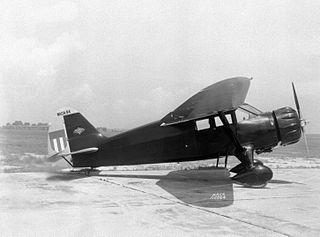
The Stinson Aircraft Company was an aircraft manufacturing company in the United States between the 1920s and the 1950s.

Fisher Body was an automobile coachbuilder founded by the Fisher brothers in 1908 in Detroit, Michigan.

John Francis Dodge was an American automobile manufacturing pioneer and co-founder of Dodge Brothers Company.

Horace Elgin Dodge Sr. was an American automobile manufacturing pioneer and co-founder of Dodge Brothers Company.
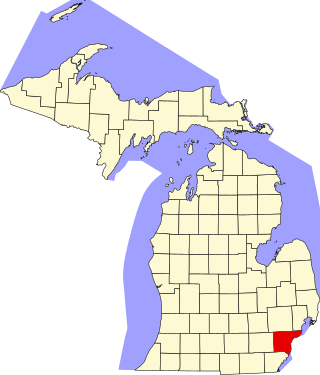
This is a list of the National Register of Historic Places listings in Wayne County, Michigan.

The Packard Proving Grounds, was a proving ground established in Shelby Charter Township, Michigan in 1927 by the Packard Motor Car Company of Detroit. It is listed in the National Register of Historic Places.

Pressed Steel Company Limited was a British car body manufacturing business founded at Cowley near Oxford in 1926 as a joint venture between William Morris, Budd Corporation of Philadelphia USA, which held the controlling interest, and a British / American bank J. Henry Schroder & Co. At that time the company was named The Pressed Steel Company of Great Britain Limited. It acquired Budd's patent rights and processes for use in the United Kingdom. Morris transferred his interest to his company, Morris Motors Limited.
Clarence Willard Avery was an American business executive. He was considered a driving force behind Ford Motor Company's moving assembly line, and was president and chairman of auto-body supplier Murray Corporation of America.

In the United States, the automotive industry began in the 1890s and, as a result of the size of the domestic market and the use of mass production, rapidly evolved into the largest in the world. The United States was the first country in the world to have a mass market for vehicle production and sales and is a pioneer of the automotive industry and mass market production process. During the 20th century, global competitors emerged, especially in the second half of the century primarily across European and Asian markets, such as Germany, France, Italy, Japan and South Korea. The U.S. is currently second among the largest manufacturers in the world by volume.
The C R Wilson Body Company with its plant located at Milwaukee Junction, Detroit, Michigan was incorporated in 1897. Early customers included Cadillac, Ford, Oldsmobile, and many other now forgotten brands.

The Russell Industrial Center is an industrial factory turned to commercial complex of studios and shops that is located at 1600 Clay Street in Detroit, Michigan. The Russell Industrial Center is a 2,200,000-square-foot (200,000 m2), seven building complex, designed by Albert Kahn for John William Murray in 1915. It contains studios and lofts and serves as a professional center for commercial and creative arts.
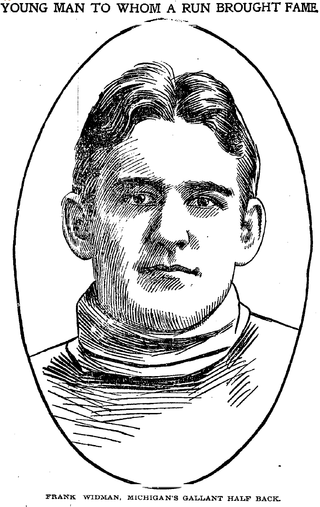
Charles Henry Widman was an American football player and businessman.
Midland-Ross Co. was an American steel, aerospace products, electronics, and automobile components manufacturer which existed from 1894 to 1986.
Briggs Manufacturing was an American, Detroit-based manufacturer of automobile bodies for Ford Motor Company, Chrysler Corporation and other U.S. and European automobile manufacturers.
Houdaille Industries was a diversified manufacturing company which produced automotive products, industrial products, machine tools, construction materials and contracting. The company had its beginnings in Buffalo, New York, in 1919, where the Houde Engineering Corporation manufactured shock absorbers that had been invented and patented in France by Maurice Houdaille (1880-1953). The company continued to grow with the automobile industry, and through diversification, until 1987 when it was forced to liquidate most of its assets to satisfy obligations to investors from a 1979 leveraged buy out.